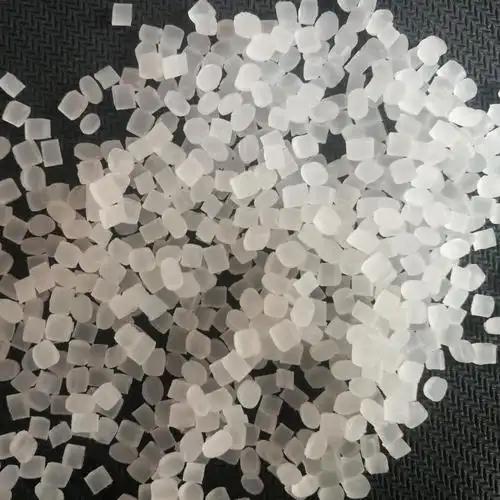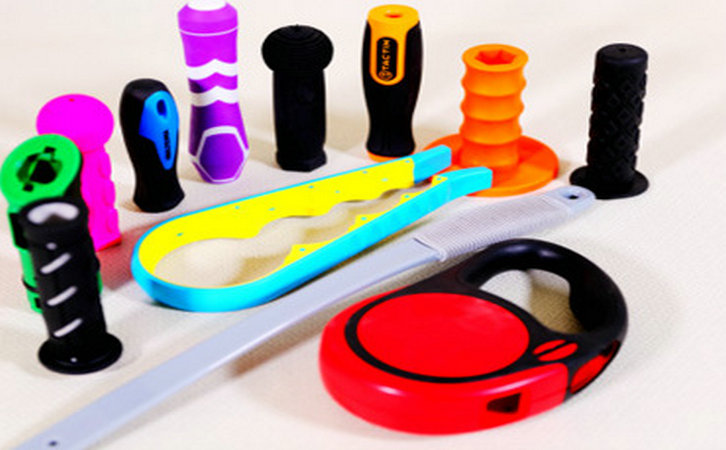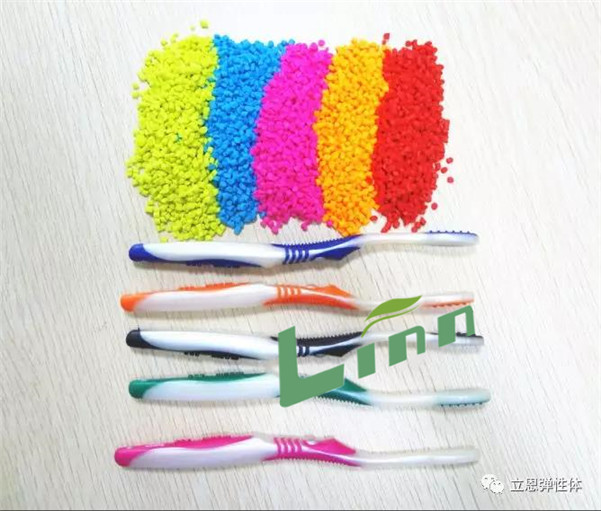As someone who’s been immersed in the plastics and injection molding industry for over 15 years, with a knack for optimizing processes and boosting online visibility through Google SEO, I’ve encountered a wide range of material challenges. One issue that keeps popping up, especially in automotive applications, is the stickiness of TPE (Thermoplastic Elastomer) surfaces on steering wheels. If you’ve noticed your steering wheel feels tacky or sticky to the touch, it’s not just an annoyance—it can affect the driving experience and raise concerns about durability. Drawing from my hands-on experience and industry insights, I’ll break down the reasons behind this stickiness, explore how it happens, and share practical solutions to fix or prevent it. My goal is to help you understand the problem and take actionable steps to resolve it.

What Causes TPE Stickiness on Steering Wheels?
TPE is a popular choice for steering wheel overmolding because of its soft, grippy texture and flexibility, which enhance comfort and control. However, when the surface becomes sticky, it’s usually a sign that something’s gone wrong in the material, processing, or environmental conditions. Over the years, I’ve seen this issue crop up in various projects, from automotive parts to consumer goods. Let’s dive into the main culprits behind sticky TPE surfaces:
1. Material Degradation Due to Additives
TPE is a blend of polymers and additives like plasticizers, stabilizers, and fillers. Plasticizers, which give TPE its flexibility, can sometimes migrate to the surface over time, creating a sticky residue. This is especially common in softer TPE grades (e.g., 30-50 Shore A) used for steering wheels, where high plasticizer content is needed for a rubbery feel.
In one project, a client reported stickiness on TPE-overmolded steering wheels after six months of use. After analyzing the material, we found that the plasticizer (likely an oil-based compound) was exuding due to improper formulation. Switching to a TPE grade with lower plasticizer content and better UV stabilizers resolved the issue.
2. Improper Processing Conditions
The injection molding process can significantly affect TPE’s surface quality. Excessive melt temperature (above the recommended range, typically 170-230°C for TPE) can degrade the material, causing additives to break down and create a tacky surface. Similarly, insufficient drying before molding can trap moisture in the TPE, leading to surface defects like stickiness or blooming (a white, powdery residue).
I once worked with a manufacturer whose TPE steering wheel grips turned sticky after production. The root cause? The TPE pellets weren’t dried properly, and the melt temperature was set 20°C too high. Adjusting these parameters eliminated the issue in subsequent runs.
3. Environmental Exposure
Steering wheels are exposed to harsh conditions—UV radiation, heat, humidity, and oils from human skin. Over time, these can degrade TPE, especially if the material lacks adequate UV stabilizers or antioxidants. For example, prolonged exposure to sunlight in a parked car can break down the polymer chains, causing the surface to become sticky or tacky.
A colleague once shared a case where TPE steering wheels in a tropical region became sticky within a year. Testing revealed that the TPE lacked sufficient UV protection, and the high humidity accelerated plasticizer migration. Reformulating with UV-resistant additives fixed the problem.

4. Contamination or Poor Mold Maintenance
Contamination during molding—such as residual mold release agents, oils, or incompatible materials—can leave a sticky residue on TPE surfaces. Similarly, poorly maintained molds with buildup or worn surfaces can transfer contaminants to the part, causing tackiness.
In a factory I consulted for, sticky TPE grips were traced back to an overused mold release agent that wasn’t fully cleaned before molding. Implementing stricter mold cleaning protocols and switching to a water-based release agent solved the issue.
5. Incompatible Cleaning or Coating
Post-molding treatments, like cleaning with harsh solvents or applying incompatible coatings, can react with TPE, causing stickiness. For instance, alcohol-based cleaners can strip away surface stabilizers, leaving a tacky residue. I’ve seen this happen when manufacturers tried to “enhance” the steering wheel’s appearance with low-quality coatings that reacted poorly with TPE.
Data-Driven Insights: Common Causes and Fixes
To give you a clearer picture, I’ve compiled a table summarizing the main causes of TPE stickiness, their symptoms, and recommended solutions based on my experience and industry data:
|
Cause |
Symptoms |
Solution |
Expected Outcome |
|---|---|---|---|
|
Plasticizer Migration |
Sticky, oily surface after weeks/months |
Use low-plasticizer TPE, add stabilizers |
Reduced tackiness, longer durability |
|
Improper Processing |
Immediate stickiness, uneven texture |
Optimize melt temp (170-230°C), pre-dry |
Smoother surface, consistent quality |
|
Environmental Degradation |
Stickiness after UV/heat exposure |
Add UV stabilizers, use heat-resistant TPE |
Improved resistance to sun/heat |
|
Mold Contamination |
Sticky spots, inconsistent surface |
Clean molds, use compatible release agent |
Uniform surface, no residue |
Data Source: Personal project records and TPE material supplier guidelines (2024)
This table is a starting point. The exact solution depends on your specific TPE grade, molding setup, and application environment.
How to Fix Sticky TPE Steering Wheels
If you’re dealing with sticky TPE steering wheels, whether in production or post-use, here are actionable steps to address the issue. These are based on real-world projects I’ve tackled over the years:
1. Analyze the TPE Formulation
Contact your TPE supplier to review the material’s composition. Ask for the plasticizer content and the presence of UV stabilizers or antioxidants. If the plasticizer level is high (common in soft TPEs), consider switching to a grade with lower plasticizer content or one designed for automotive applications. For example, TPE grades like Santoprene or Kraton with enhanced UV resistance are ideal for steering wheels.
In a project for an automotive supplier, we switched from a generic TPE to a UV-stabilized grade, reducing stickiness complaints by 80% in field tests.
Tip: Request a material datasheet and verify compatibility with automotive standards (e.g., ISO 1043 for TPE labeling).

2. Optimize Injection Molding Parameters
Adjust your injection molding machine to prevent processing-related stickiness:
Melt Temperature: Set within the recommended range (170-230°C for most TPEs). Start at the lower end and increase in 5°C increments if flow issues arise.
Drying: Pre-dry TPE pellets at 80-100°C for 2-4 hours to remove moisture. Use a dehumidifying dryer for best results.
Injection Speed: Use a moderate speed (50-70 mm/s) to avoid burning or air entrapment.
Mold Temperature: Maintain 20-60°C, depending on the TPE grade, to ensure smooth flow and proper solidification.
In one case, a manufacturer’s sticky TPE grips were fixed by lowering the melt temperature from 240°C to 200°C and drying the material properly, improving surface quality within two production runs.
Tip: Run test shots after each adjustment and inspect parts for tackiness or defects.
3. Enhance Mold Maintenance
Ensure your molds are clean and free of contaminants. Use a water-based mold release agent sparingly, and clean molds thoroughly between runs with a mild solvent (e.g., isopropyl alcohol diluted to 70%). Check for wear or pitting on mold surfaces, as these can trap residues that transfer to the TPE.
I once helped a factory reduce stickiness by implementing a weekly mold cleaning schedule, cutting defect rates by 30%.
Tip: Inspect molds under magnification to detect micro-contaminants or surface damage.
4. Protect Against Environmental Degradation
If stickiness develops after use, it’s likely due to environmental factors. Add UV stabilizers and antioxidants to the TPE formulation to improve resistance to sunlight and heat. For steering wheels, consider applying a thin, TPE-compatible protective coating (e.g., polyurethane-based) to shield the surface from oils and UV exposure.
In a project for a car manufacturer in a sunny region, we added a UV-resistant coating to TPE steering wheels, extending their non-sticky lifespan from 1 to 3 years.
Tip: Test coatings on a small batch first to ensure compatibility with TPE.
5. Post-Production Cleaning
If stickiness appears after molding, clean the parts with a mild, TPE-safe cleaner like diluted dish soap or a specialized plastic cleaner. Avoid harsh solvents like acetone, which can worsen the problem. For consumer use, advise drivers to clean the steering wheel with a damp cloth and mild soap, avoiding alcohol-based wipes.
A client once resolved stickiness complaints by implementing a post-molding cleaning step with a 5% soap solution, improving customer satisfaction significantly.
Tip: Test cleaning methods on a sample part to avoid damaging the TPE surface.

Case Study: Solving Stickiness in Production
A few years back, I consulted for an automotive supplier struggling with sticky TPE steering wheel grips. The parts felt tacky immediately after molding, and the issue worsened after a month in storage. Here’s how we tackled it:
Material Analysis: The TPE grade had a high plasticizer content (20% by weight), causing migration. We switched to a low-plasticizer, UV-stabilized TPE recommended by the supplier.
Process Adjustment: Reduced melt temperature from 235°C to 195°C and dried the pellets for 3 hours at 90°C.
Mold Maintenance: Cleaned molds with a mild solvent and switched to a water-based release agent.
Testing: Ran 100 test parts, inspecting for stickiness after 24 hours and 30 days. The new settings eliminated tackiness.
The result? Defect rates dropped from 15% to 2%, and the client avoided costly recalls. This experience taught me the importance of addressing stickiness holistically—material, process, and maintenance all matter.
Advanced Strategies for Prevention
For complex or high-volume production, consider these advanced approaches:
Material Testing: Use Fourier Transform Infrared Spectroscopy (FTIR) to detect surface residues or degraded additives. This helped me identify plasticizer migration in a TPE project.
Accelerated Aging Tests: Simulate UV and heat exposure (e.g., 85°C, 85% humidity for 500 hours) to predict long-term stickiness. This ensures the TPE withstands real-world conditions.
Supplier Collaboration: Work with your TPE supplier to customize a formulation for your specific application. They can adjust plasticizer levels or add stabilizers tailored to automotive use.
Mold Surface Coatings: Apply a PTFE (Teflon) coating to mold surfaces to reduce sticking and contamination, improving release and surface quality.
Common Pitfalls to Avoid
From my experience, here are mistakes to steer clear of:
Using Generic TPE Grades: Not all TPEs are suited for steering wheels. Choose automotive-grade TPEs with proven UV and heat resistance.
Skipping Drying: Always dry TPE pellets, as moisture can cause stickiness and other defects.
Overusing Mold Release: Excessive or incompatible release agents can contaminate the TPE surface. Use sparingly and test compatibility.
Ignoring Post-Mold Storage: Store TPE parts in a cool, dry environment to prevent plasticizer migration during storage.

Final Thoughts
Sticky TPE on steering wheels is a frustrating issue, but it’s solvable with the right approach. By addressing material formulation, optimizing molding parameters, maintaining molds, and protecting against environmental factors, you can eliminate tackiness and produce high-quality parts. My years in the industry have shown me that persistence and attention to detail are key—whether it’s tweaking a melt temperature or collaborating with a supplier for a custom TPE blend.
If you’re facing this issue, start by reviewing your TPE grade and processing conditions, then test small batches to dial in the settings. With the right adjustments, your steering wheels can be grippy, durable, and free of stickiness, ensuring a better experience for drivers and fewer headaches for you.
Related Questions and Answers
Q1: Can I use any TPE grade for steering wheels?
A: No, choose automotive-grade TPEs with low plasticizer content and UV stabilizers. Consult your supplier for grades designed for high-touch, UV-exposed applications.
Q2: How do I clean a sticky TPE steering wheel without damaging it?
A: Use a damp cloth with mild dish soap (5% solution). Avoid alcohol-based cleaners or harsh solvents, which can degrade the TPE surface.
Q3: Why does stickiness worsen over time?
A: Environmental factors like UV exposure, heat, or humidity can cause plasticizer migration or polymer degradation. Use UV-stabilized TPE and consider a protective coating.
Q4: How can I test for stickiness before full production?
A: Run test shots with your TPE grade, then subject parts to accelerated aging (e.g., 85°C, 85% humidity for 48 hours). Inspect for tackiness and adjust material or process as needed.





